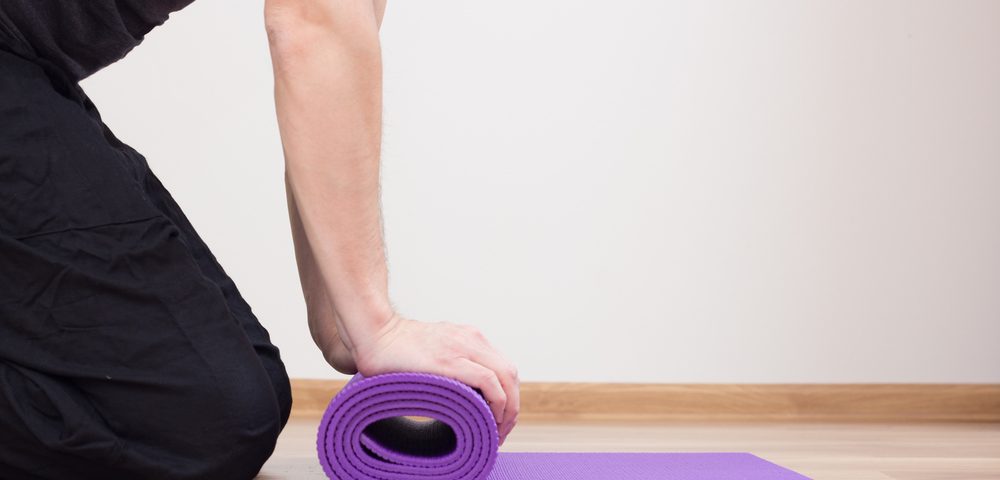Regular aerobic and strength exercises of moderate intensity done over a relatively short period of time can improve the fitness and decrease the body fat of patients with inflammatory bowel disease (IBD) who are in clinical remission and typically inactive, a Phase 2 trial shows.
In light of these results, the researchers consider exercise a safe and inexpensive option to help prevent or manage IBD-related loss of muscle mass and obesity-related disorders.
The study, “Moderate-intensity aerobic and resistance exercise is safe and favorably influences body composition in patients with quiescent Inflammatory Bowel Disease: a randomized controlled cross-over trial,” was published in the journal BMC Gastroenterology.
Modern lifestyles, characterized by being sedentary and eating high-calorie foods, are contributing to an increase in obesity and health-related problems in IBD patients.
Because being overweight and having metabolic problems can add to the burden of having IBD in patients, a team of researchers at Cork University Hospital in Ireland decided to investigate if aerobic and resistance (strength) training could quickly and safely improve patients’ condition, particularly their body composition.
Exercise can benefit people with inflammatory and metabolic disorders, improving their quality of life, increasing bone mineral density, and reducing fatigue levels.
Many patients with IBD are affected by sarcopenia — the degenerative loss of skeletal muscle — due to insufficient nutrient absorption in the gut and corticosteroid treatment. An increase in muscle mass due to physical activity “could exert a particularly advantageous effect” for these patients, according to the researchers.
To test this, they conducted a randomized, controlled cross-over Phase 2 trial called ExMET-IBD (NCT02463916).
The trial’s primary goal was to determine the effects of an eight-week combined aerobic and resistance exercise program on the body composition of IBD and rheumatoid arthritis patients. Secondary goals included relating these changes to alterations in the patients’ gut microbiota, which is the bacteria and fungi community present in the gut.
This particular report focused only on the results concerning IBD participants, which included those with Crohn’s disease or ulcerative colitis, at a mean age of 25 years, who were in clinical remission (no disease activity), and were physically inactive or had low levels of activity.
In total, 13 patients completed the exercise program and seven served as controls.
Control patients remained at their usual physical levels (none or low) for a period of eight weeks, after which they crossed over to the exercise group. Control values refer only to the control period of those patients.
Those on the exercise regimen began an eight-week program of exercise that was progressive and moderate in intensity, based on the Couch to 5K training programs.
Participants were asked to go to the gym three times per week, where they had to exercise on aerobic and resistance training machines. All patients were accompanied by a gym instructor who provided correction and feedback if necessary.
Results showed that patients on the exercise program improved their physical fitness. This was demonstrated by a significant increase in the median estimated maximal oxygen consumption measured during incremental exercise (VO2max), compared with controls.
Determining VO2max is a gold standard to measure an individual’s cardiorespiratory fitness and endurance capacity during prolonged exercise because muscles need oxygen to sustain aerobic activity.
The patients’ body composition, measured by dual energy X-ray absorptiometry (DEXA), also improved in response to exercise. This analysis included measurement of the body’s fat mass, bone mass, and lean tissue.
Noticeably, those exercising improved in body composition with a median decrease of 2.1% in body fat compared with the non-exercising group.
Lean tissue, which refers to the fat-free skeletal muscle and other fat-free body components, excluding the bone, increased by a median of 1.59 kilograms; in contrast, the amount of fat mass decreased by a median of 1.52 kilograms in the exercise group.
There were no significant changes in disease activity, quality of life, mood, or anxiety between patients exercising and controls, as measured by specific scores.
In accordance with the lack of changes in disease activity, the blood levels of pro-inflammatory cytokines and C-reactive protein remained stable from the start of the study in both groups.
Additionally, the patients’ gut microbiota was not significantly altered.
The researchers’ “take-home” message from this study is that “short-term combined aerobic and resistance training will achieve favorable objective changes in body composition in patients with IBD and that this is not only safe, but also represents an inexpensive strategy for the prevention and treatment of IBD-related sarcopenia and obesity-related metabolic disorders.
They add that patients should be reassured that gradual and controlled physical exercise does not aggravate IBD activity and that “policy- and guideline-makers should consider the addition of regular aerobic and resistance training to current treatment algorithms for patients with IBD.”
However, they warn that more studies are required before recommending exercise to patients with active disease, an effect that was not addressed in this study.

